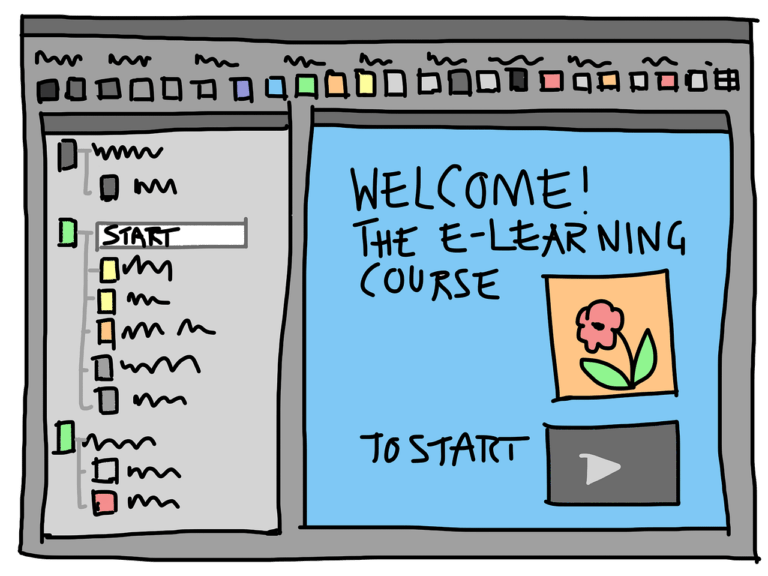How to Create Effective Instructional Videos for Your ELearning Course

For eLearning professionals, creating effective videos is often one of the most challenging aspects of designing an ELearning course. Even when you’re not trying to make a flashy video, most instructional videos still require visual cues to explain complex ideas or break down difficult concepts. And if you’re creating instructional videos for your eLearning course, chances are you aren’t alone.
According to a report from Statists, 67% of adults in the U.S. now watch online video content at least once a month. That means there’s an enormous market for instructional videos that can help users learn specific skills or topics better than they could through reading text alone.
Creating effective instructional videos can also help increase learner engagement and retention rates so learners who do view your course consistently will be more likely to continue with it again.
What to Know Before You Create an Instructional Video
Before you get started on creating instructional videos for your eLearning course, you’ll want to know a few key things. You’ll want to know what kind of content learners are looking for in your videos, and you’ll want to make sure your videos are relevant and helpful to learners.
For example, do you know what skills or topics are most relevant to your course’s viewers? Or are your learners looking for a different type of content altogether? These are just a few things you’ll want to keep in mind before you begin creating instructional videos for your eLearning course.
Use Visuals where they’re Most Effective
Visuals are an incredibly powerful learning tool. They can help explain complex ideas, help learners remember key concepts, and encourage behavioral change when paired with written text. However, visuals often receive the most attention when used to create corporate training videos.
While visuals are a great addition to any type of content, they can be even more effective when used to create instructional videos for eLearning. Instructional videos are often used to help learners understand specific skills or learn specific content like how to use various software applications, for example.
Other types of content that can eLearning professionals benefit from visuals include tutorials on how to use specific tools or design software. The most important thing to remember when using visuals in your instructional videos is that they need to be purposeful.
If your visuals don’t help explain a skill or concept, or if they don’t encourage learners to use the information they’re being shown, they aren’t purposeful. And while visuals are often the most effective type of content in your instructional videos, they aren’t the only type.
Read More: The Best Degrees for Instructional Designers – Master’s In Instructional Design Masters Online
Keep it Simple and Short
While you can make any type of video in the world, the majority of your content should be instructional videos. And the best way to ensure your instructional videos are the most effective type of video is by keeping it short. If you’re creating an instructional video with a lesson that’s longer than 30 minutes, break it up into multiple videos.
Even if your course requires a single video to cover a topic, break it eLearning professionals up into multiple videos and then create subtopics under it. This will allow you to cover more complicated topics and more detailed examples in a shorter amount of time.
It will also allow you to have shorter videos because viewers will be able to finish them faster. And it will also help you keep your course’s cost down. Keeping your videos short will also help keep your instructional videos simple, which will help keep your learners engaged.
Use animations sparingly and carefully
Like visuals, the best way to use animations in your instructional videos is by keeping them simple. While animations can be extremely helpful when used to explain complex visual concepts or break down difficult ideas, keep them short and simple. Animated GIFs and videos are extremely popular content types and often used as tutorial videos.
But while GIFs are an easily accessible type of visual and can help explain complex concepts visually, they can also be extremely distracting. That’s because they can be distracting both inside your video and on a computer screen.
That’s why the best way to use GIFs in your instructional videos is to use them with short instructions or to provide instructions for a single action.
Don’t rely solely on audio
While audio is still a very effective tool for creating instructional videos, visuals aren’t the only type of content you need to create. And if you’re trying to keep your videos as brief as possible, you can’t rely solely on audio. That’s because auditory content is only effective for very specific audiences.
Auditory learners, for example, learn best when they hear information in an environment. So when creating eLearning professionals your instruction videos, you’ll want to include some type of visual content. And depending on the type of learner your videos are designed for, you can even pair auditory visuals with some type of written text.
Auditory learners can often be best guided by visuals. So when creating your instructional videos, you can either include both audio and visuals or pair one visual with some type of textual content.
Include some form of interactivity
One of the best ways to keep your instructional videos short and simple is with some form of interactivity. As mentioned before, audio is only effective for a very specific type of learner. That’s why you can’t rely solely on audio to guide learners.
However, visual and auditory content can work together with some form of interactivity. That’s where you an incorporate some form of click-through information or allow learners to click through to a website.
Mixed media content can also be paired with some type of visual or textual interactivity. That’s because when you pair audio with visual content, you need to provide some type of visual or textual context for the audio.
Summarize key concepts with text
As great as it would be to create a video that showed the world how awesome your software is, that’s not what most people want out of a single video. That’s why most instructional videos include a summary of key concepts. These summaries can take many different forms. Some videos may include an info graphic, while others may only include a few sentences describing the main points of each video.
Whatever form they take, these summaries are extremely important to making your instructional videos effective eLearning professionals. They should be used to help describe key concepts, provide context for the visuals used in your videos, and provide a sense of direction for how the rest of the video will go.
Read also: Creating E-Learning Courses: What Makes The Course Development Process Successful
Conclusion
Instructional videos are an extremely effective way to help learners learn specific skills or understand specific topics. They can also be used to break down complex ideas and provide context for visuals used in your videos. And while visuals are the most powerful type of content in instructional videos, they aren’t the only type.
You can use visuals and animations, but keep them simple and short, and don’t rely solely on audio. You can also include some form of interactivity, and summarize key concepts with text.
Check out this post on How To Pick The Right E-Learning Courses To Meet Your Needs.
Thank you for your time.







